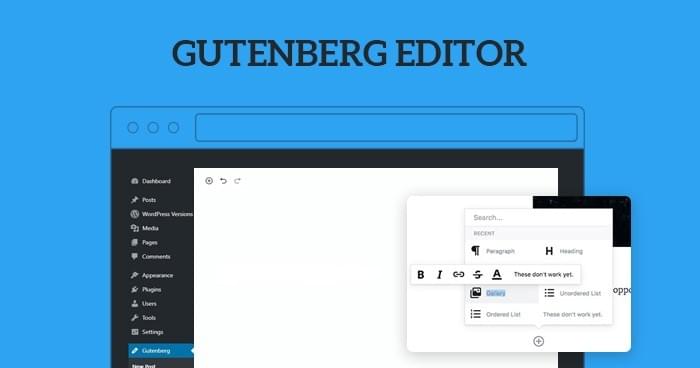
The introduction of Gutenberg marked a significant shift in the landscape of content creation on WordPress. This block-based editor replaced the traditional Classic Editor, bringing forth a more intuitive and dynamic approach to building and customizing web content. In this article, we'll explore the numerous advantages of Gutenberg on WordPress, highlighting how this editor empowers users to create engaging, visually appealing, and versatile content.
- Intuitive Block-Based Editing: The core advantage of Gutenberg lies in its intuitive block-based editing system. Instead of dealing with a single, monolithic text box, users now work with individual content blocks. Each block represents a distinct element, whether it's a paragraph, image, video, or custom widget. This modular approach simplifies the editing process, allowing users to focus on one element at a time.
- Enhanced User Experience: Gutenberg enhances the overall user experience for both beginners and experienced users. Its visual and interactive nature streamlines the content creation process. Users can seamlessly drag and drop blocks, preview changes in real-time, and customize their content with a more hands-on, WYSIWYG (What You See Is What You Get) approach. This results in a more engaging and user-friendly editing experience.
- Versatile Content Layouts: Gutenberg empowers users with the ability to create versatile and dynamic content layouts. With a wide range of available blocks, users can easily add, arrange, and customize elements such as text, images, galleries, and more. This flexibility facilitates the creation of engaging and visually appealing pages, making it easier to achieve the desired look and feel for a website.
- Rich Media Integration: Adding multimedia elements to content is seamless with Gutenberg. Users can effortlessly embed images, videos, audio files, and even social media content directly into their blocks. The editor supports a wide array of media types, enabling users to create more interactive and engaging posts and pages without relying on additional plugins or complex coding.
- Reusable Content Blocks: Gutenberg introduces the concept of reusable content blocks, allowing users to save and reuse specific elements across their website. Whether it's a call-to-action button, a testimonial section, or a frequently used layout, reusable blocks streamline the editing process and ensure consistency throughout the site. This feature is particularly beneficial for maintaining brand identity and design cohesion.
- Mobile-Friendly Editing: In an era where mobile responsiveness is paramount, Gutenberg is designed to be mobile-friendly. The block-based system ensures that content looks and functions seamlessly across various devices, including smartphones and tablets. Users can edit and preview their content in a way that accurately reflects the mobile experience, contributing to a consistent and accessible design.
- Simplified Embedding of Third-Party Content: Gutenberg simplifies the process of embedding third-party content seamlessly. Whether it's tweets, YouTube videos, or Instagram posts, users can easily embed content by adding the respective block. This eliminates the need for manual embedding codes and enhances the overall efficiency of content creation.
- Increased Collaboration: Gutenberg facilitates collaboration among users contributing to a WordPress site. With the block-based system, multiple contributors can work on different blocks simultaneously without interfering with each other's content. This collaborative approach enhances workflow efficiency, especially in team-based content creation environments.
- Consistent Updates and Improvements: Gutenberg is actively developed and regularly updated by the WordPress community. This commitment to ongoing improvements ensures that users benefit from the latest features, security patches, and optimizations. The continuous development of Gutenberg keeps the editor aligned with evolving web standards and user expectations.
- Seamless Transition for Existing Users: For users transitioning from the Classic Editor to Gutenberg, the learning curve is gradual and user-friendly. Gutenberg retains the familiarity of the Classic Editor while introducing new features progressively. This allows existing users to adapt to the block-based system without a steep learning curve.
In conclusion, Gutenberg has revolutionized content creation on WordPress, offering a range of advantages of gutenberg on wordpress. From its intuitive block-based editing to versatile content layouts, rich media integration, and collaborative features, Gutenberg empowers users to create engaging and visually appealing websites with efficiency and ease. As the editor continues to evolve, it remains a cornerstone in shaping the future of content creation on the WordPress platform.
